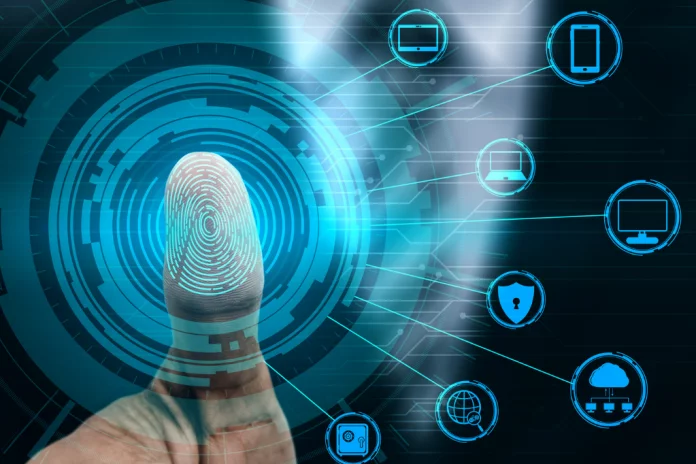Biometric Authentication Technology
Biometric Authentication Technology, an innovative marvel of the digital age, has revolutionized the way we secure our personal and professional information. This cutting-edge technology combines the prowess of biology and technology, providing an unparalleled level of security and convenience. In this comprehensive guide, we’ll delve into the depths of Biometric Authentication Technology, exploring its various facets, applications, benefits, and even its potential challenges.
In an era where digital interactions have become the norm, safeguarding sensitive information is of paramount importance. Traditional methods of authentication, such as passwords and PINs, have shown vulnerabilities in the face of hacking and identity theft. Biometric Authentication Technology offers a more reliable and user-friendly solution by utilizing unique biological traits for verification purposes.
The Essence of Biometric Authentication Technology
Biometric Authentication Technology relies on distinctive physiological and behavioral characteristics of individuals, making it virtually impossible to replicate or forge. These characteristics include fingerprints, facial features, voice patterns, iris scans, and even behavioral traits like typing patterns and gait recognition. By analyzing these attributes, systems can ensure that only authorized individuals gain access.
Enhancing Security: How Does It Work?
Biometric systems work by capturing an individual’s unique biological data and converting it into a digital template. This template is then stored securely and used for future comparisons. When a user attempts to access a secure location or device, the system captures their biometric data again and matches it with the stored template. If the two templates correspond, access is granted. This process offers a significantly higher level of security compared to traditional methods.
Applications Across Industries
The applications of Biometric Authentication Technology are diverse and far-reaching, spanning industries such as finance, healthcare, government, and more.
1. Financial Sector: Safeguarding Transactions
Biometric authentication has transformed the financial landscape. With fingerprint or facial recognition, users can securely access their bank accounts and authorize transactions, reducing the risk of unauthorized access and fraud.
2. Healthcare Industry: Protecting Patient Data
In healthcare, patient privacy is paramount. Biometric solutions ensure that only authorized medical personnel can access electronic health records, minimizing the chances of sensitive data breaches.
3. Government Initiatives: Strengthening Security
Governments around the world are adopting biometric technology for identity verification in passports, visas, and even voting systems. This enhances security and prevents fraudulent activities.
4. Smartphone Security: Convenience at Your Fingertips
Modern smartphones have integrated biometric authentication features such as facial recognition and fingerprint scanning, offering users a convenient and secure way to unlock their devices and access sensitive information.
5. Border Control: Streamlining Travel
Airports and immigration checkpoints use biometric authentication to expedite the travel process. This technology verifies travelers’ identities quickly, enhancing security and reducing waiting times.
Benefits Galore: Advantages of Biometric Authentication
The benefits of Biometric Authentication Technology are multifaceted, touching on security, convenience, and user experience.
– Unparalleled Security:
Biometric traits are unique to each individual, making it extremely difficult for unauthorized access.
– Convenience Redefined:
Gone are the days of remembering complex passwords. Biometric authentication offers a seamless and effortless user experience.
– Fraud Prevention:
The advanced nature of biometric technology significantly reduces the chances of identity theft and fraudulent activities.
– Improved Accountability:
Incorporating biometrics in business settings enhances accountability, as actions can be tied to specific individuals.
– User-Friendly Interfaces:
Biometric systems are designed with user convenience in mind, ensuring a hassle-free and intuitive experience.
Overcoming Challenges and Concerns
While Biometric Authentication Technology offers a plethora of advantages, it’s not without its challenges.
– Privacy Concerns:
Storing biometric data raises concerns about potential misuse and hacking. Stringent security measures are crucial to address these issues.
– False Positives and Negatives:
No technology is flawless. Biometric systems may sometimes generate false positives (authorized users denied access) or false negatives (unauthorized users granted access).
– Integration Costs:
Implementing biometric systems can be expensive, especially for small businesses or organizations with limited resources.
FAQs about Biometric Authentication Technology
Q: Is biometric authentication foolproof?
Biometric authentication significantly enhances security but isn’t entirely foolproof. There’s always a slight chance of false positives or negatives due to various factors.
Q: Can biometric data be stolen and replicated?
While biometric data is highly secure, breaches can occur. However, reputable systems store data in encrypted formats, making it extremely difficult to replicate.
Q: Can I use multiple biometric features together?
Absolutely! Many systems offer multi-factor authentication, combining features like fingerprint and facial recognition for added security.
Q: What happens if my biometric data changes?
Certain life events, like injuries, can alter biometric traits. Reputable systems provide methods to update your biometric profile.
Q: Is biometric authentication suitable for all industries?
Yes, biometric authentication has diverse applications across industries. However, sensitive sectors like healthcare and finance benefit the most.
Q: Are there legal regulations surrounding biometric data usage?
Yes, many regions have specific regulations governing the collection, storage, and usage of biometric data to ensure user privacy.
Conclusion: A Secure Future Awaits
Biometric Authentication Technology stands as a beacon of security and convenience in an increasingly digital world. Its ability to harness the uniqueness of human biology for authentication purposes is awe-inspiring. From financial transactions to healthcare records and beyond, biometric technology continues to reshape industries and elevate security standards. As technology evolves and security measures become even more robust, we can anticipate a future where biometric authentication is an integral part of our daily lives.
SOURCEBAE: HIRE JAVA DEVELOPER





